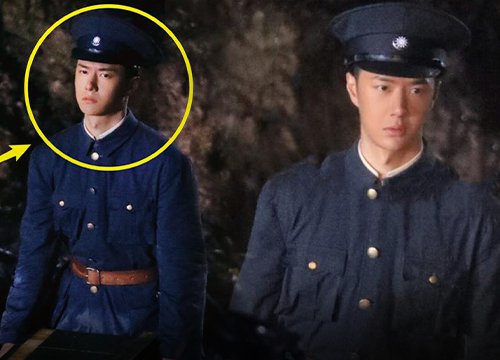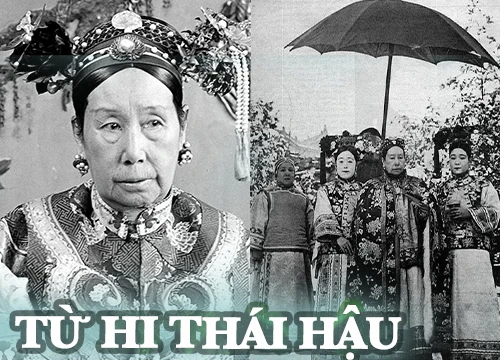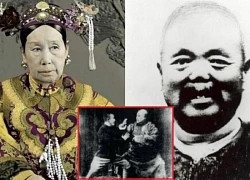Vuong Nhat Bac is "hot" with a different expression in the new movie

1 | 0 Discuss | Share
The most mysterious of all the 7 wonders of the ancient world is probably the Hanging Gardens of Babylon , because archaeologists have never found evidence of its existence.
Babylon's summer is hot. Here there are no high mountains, no deep forests, the sun has no cover, shining brightly on the ground. There has been no rain for a long time, the hot wind blows away the dust, and the crops in the fields begin to wither. But when people looked up at Babylon, they saw layers of grass and flowers in the green, one-color sky, stirring people's hearts. That is the great architecture of antiquity, famous worldwide: the Garden of Flowers in the Air, also known as the Hanging Gardens of Babylon.
Origin of the Hanging Garden
Ancient historians have listed this Hanging Garden as one of the Seven Wonders of the Ancient World. There are many theories about the origin of the Hanging Garden, but it can be attributed to two directions: Queen Semiramix is the author of this work or this garden was built by the King to give Queen Amitide.
In 2500 BC in Mesopotamia, the basin of two rivers Tigre and Euphrates (in present day Iraq) appeared Babylon. Around the 18th century BC, during the reign of King Hammourabi (1793-1750 BC), Babylon became a famous place of prosperity and thunder. In the following dynasties, Babylon gradually declined. It was not until the 7th century BC, during the reign of King Nabucodonossor (604 - 561 BC), that Babylon was revived and became a center of economy, culture, and art. . This place is the gathering point of all favorable trade and exchange routes across the vast Middle East region. After building his main palace, Nabucodonossor built the famous Hanging Gardens in North Babylon.
Legend has it that the King built this garden to give Queen Amitide, his beloved wife. Amitide of Medea, daughter of King Xiazarex. In order for her to be less homesick, the king decided to build a precious garden, in which beautiful, precious and rare trees of Mede were planted.
The second theory is that about 1000 years after the reign of Hammourabi, Queen Semiramix advocated the magnificent construction of Bbylone, so she expanded the old city, built a large bridge across the Euphrates River to connect the two city areas back and forth on the river. river. During the expansion of Babylon, Semiranix built the famous Hanging Garden.
Whether the Hanging Gardens of Babylon are associated with Semiramix or Amithite, this masterpiece also comes from a woman. Standing on the Hanging Garden, one can see the whole city of Babylon because it is 100 meters high. The Hanging Garden is a green expanse, a hope and a point of orientation for camels traveling in the hot, distant desert.
Hanging Gardens of Babylon but not in Babylon
Because of the conflicting descriptions, some are skeptical as to whether the hanging garden is real. Although there is no mention of any architectural features, except for the unrotted trunks, the fruit is surprising. Greek tourists must have witnessed the lifting of trees, and we can legally search for what remains in the current ruins. But unfortunately, the palaces of Babylon were ravaged by people eager to make use of the magnificent burnt bricks thousands of years ago. Today only the foundation remains.
The Hanging Gardens of Babylon are well documented by Greek historians such as Strabo and Diodorus Siculus, but otherwise there is little evidence of their presence. In fact, there is no Babylonian record of the existence of such gardens.
The Greek historian Diordorus Siculus described the garden as 122 m wide, 122 m long, with walls up to 24 m high. He located the garden above some of the arched roofs he discovered in the South Palace, which once again contained wells, the dome also being the foundation of a complex. administrative area, can also be a prison.
Some of the evidence collected during the excavations of the palace at Babylon shows, but does not completely prove, that it is the same as described. Some schools of thought through the ages may have confused its location with the gardens that already existed at Nineveh and the discovery of stones proving its existence has been found. The passages on those stones describe Archimedes's ability to use something resembling a screw-type pump to bring water to the required height.
However, Dr. Stephanie Dalley and a researcher at the University of Oxford (UK) believes she has found evidence of the existence of this legendary wonder. In her forthcoming book, "The Hanging Gardens of Babylon: Unraveling the Mystery of the Legendary Wonder," Stephanie asserts that the ruins of the Hanging Gardens of Babylone have never been found, because the hanging garden was not originally built in Babylon at all.
Dr. Stephanie spent a lot of time searching the hanging garden and studying ancient texts written in cuneiform. She believes it was built in Nineveh, the capital of the Assyrian empire, nearly 483km north of Babylon; and the one who built this wonder was the powerful Assyrian king, Sennacherib, in the early 7th century BC, not by Nebuchadnezzar II in the 6th century BC as scholars believe often think.
Dr. Stephanie, also a scholar of the language of Mesopotamia, found evidence of this in the translation of an ancient document by King Sennacherib. Accordingly, the hanging garden is a one-of-a-kind palace and a wonder for everyone. King Sennacherib also mentioned a bronze propeller - similar to the propeller invented four centuries later. And most likely, the ancients used this propeller to get water to irrigate the garden.
During recent excavations in Nineveh (near present-day Iraq's city of Mosul), archaeologists discovered a large and wide system of plumbing, used to divert water from the mountains; and especially on it were engraved the words: "King Sennacherib of the world... Through a very long distance, I have obtained a source of water that flows directly to Nineveh."
Dr. Stephanie Dally explained that the reason for the confusion of the garden's location could be the Assyrian invasion of Babylon in 689 BC. After its capture, Nineveh was considered "New Babylon", and King Sennacherib even renamed the gates after the Babylonian entrances.
Dr. Stephanie's assertion may not only dispel any thought that the Hanging Gardens of Babylon are just a product of imagination, but also prove that this garden has been misnamed and should be changed to "a garden" hang Nineveh".
Hanging gardens really don't "hang"
Called a hanging garden, but actually it may not be "hanging" but the garden can be hung with ropes. This stems from an incorrect translation, the Greek word kremastos or pensilis in Latin not only means to hang but also means "protruding above" like a balcony.
Called the Hanging Garden because the garden above consists of 4 floors built of stone into a tower a bit like Ziggurat, a very common leveling tower in Mesopotamian architecture.
The bottom floor of the garden is a square of 246m x 246m - located on a 25x25 column system. The second floor is a square of 21x21 columns, the third floor is 17x17 columns, the top floor is 13x13 columns with dimensions of 123m x 123m. On each step is a flat garden built with stone blocks 5m long and 1.2m wide placed on thick walls. On these stone slabs is covered with a layer of reeds mixed with asphalt, a layer of stone is paved with two layers of fired bricks, on this layer is a lead plate to prevent water from seeping into the lower floor.
On top is a thick layer of fertile soil to grow even large trees. The watering of this garden is a big problem that has been solved quite well here.
The floor of the floor is made of boulders, each 5 m long, 1.2 m wide, covered with plastic, then tiled and finally covered with a layer of lead, on top of which is poured a layer of fertile soil.
The garden has enough fragrant flowers, strange grass, and rare plants brought from the areas where the king came to invade. Because the garden follows the direction of the wind, the fragrance spreads over a large area.
According to archaeologists, water was brought up from the river by a system of buckets arranged in a continuous rotating chain taken from three wells, by a large army working daily to water and care for trees and fruits. for the Hanging Garden to always be green.
Through the descriptions recorded in history books, it can be affirmed that the Hanging Gardens of Babylon is an extraordinary achievement in ancient construction techniques.
Today, the Hanging Garden is just a ruin with crumbling stone walls, annually welcomes visitors to admire the remains of the foundation of the last floor of the Hanging Garden, admire the stone pile of the fallen wall to visualize. a magical garden with the beautiful Queen of the land of a thousand and one nights nearly 3,000 years ago.
Vietnam's historical film Ly Chieu Hoang is controversial because of its bold Korean image  team youtuber15:23:32 07/04/2021Poster introduces character creation with costumes quite different from history, but with visual effects. quite nice. The main characters are mostly beautiful young actors such as Nguyen Hoang Kieu Trinh, Nguyen Phuc Quy Quang, Nong Hong Son, Nguyen Thi Dieu Van,... but the acting ability is still the same
team youtuber15:23:32 07/04/2021Poster introduces character creation with costumes quite different from history, but with visual effects. quite nice. The main characters are mostly beautiful young actors such as Nguyen Hoang Kieu Trinh, Nguyen Phuc Quy Quang, Nong Hong Son, Nguyen Thi Dieu Van,... but the acting ability is still the same

1 | 0 Discuss | Share

4 | 0 Discuss | Share

5 | 0 Discuss | Share

0 | 0 Discuss | Share




5 | 0 Discuss | Report